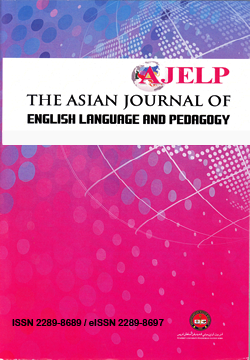Translation errors of noodles product cooking instructions from Indonesian into English
DOI:
https://doi.org/10.37134/ajelp.vol7.2.1.2019Keywords:
Translation Errors, Cooking Instruction, ATA Standards of ErrorsAbstract
This paper discussed the translation errors in various top brands of instant noodles in Indonesia, ranging from the products produced by the local industries to the one imported from overseas. In this research, the researchers used a descriptive qualitative research method. The sources of the data for the objects of the research were ten cooking instructions or procedures of various brands of instant noodles in Indonesia, translated from Indonesian into English. The data were collected by documentation techniques. The types of data were words, phrases and sentences. The data were classified and tabulated based on the error types, following the standard of ATA’s Framework for Standard Error Making Classification. The result of the analysis showed that there were 40 translation errors, found in 10 of 23 error categories with Omission as the most frequent error produced. The three most prominent error categories found in the instant noodles’ cooking instructions are Omission, Mistranslation, Syntax and Cohesion. Omission turns to be the highest category of translation errors which appeared 13 times out of 40 errors or 32.5 % of errors found in the analysis, followed by Mistranslation with 15% and Syntax and Cohesion that shares the same percentage of findings by reaching 12.5%. The researchers also found that out of 10 instant noodle brands, instant noodle brand D has the most translation errors with 9 error out of 40 errors in total, followed by brand J with 8 errors. The implication of the study is that the findings are hoped to be useful for the industry in terms of usage of English in labeling and branding the products, to avoid miscommunication and misinterpretation.
Downloads
References
Ardeshiri, Mahsa., & Zarafshan, Mehrdad. 2014. Students’ Causes of Errors in Translating Pragmatic Senses. International Journal of English and Education, 3(4), pp. 238-254.
ATA. 2016. Framework for standardized error marking. https://atanet.org/certification/abouteaxams_error.php
Carl, Michael., & Baez, M. Christina Toledo. 2019. Machine Translation Errors and the translation process: A study across different languages. The Journal of Specialised Translation, pp. 107-133.
Cuc, Pham Thi Kim. 2018. An Analysis of Translation Errors: A case study of Vietnamese EFL Students. International Journal of English Linguistics, 8(1), pp. 22-30.
Dewi, Mutiara Sri. 2016. Instant Noodle Boom in Indonesia: A Commodity Chain Analysis Study. Research Paper. Netherland: International Institute of Social Studies.
Ghasemi, Hadis., & Hashemian, Mahmood. 2016. A Comparative Study of Google Translate Translations: An Error Analysis of English-to-Persian and Persian-to0English Translations. English Language Teaching, 9(3), pp. 13-18.
Guo, Minghe. 2012. Analysis on the English-translation Errors of Public Signs. Theory and Practice in English Studies, 2(6), pp. 1214-1219.
Hartono, Rudi., & Priyatmojo, Arif Suryo. 2016. Translation Errors of Soft Drink Product Labels from Indonesian into English. INTERNATIONAL Seminar Prasasti III: Current Research in Linguistics, pp. 659-664.
Hartono, Rudi. 2018. Translation Studies: The Cases in Indonesian Context. Semarang: Fakultas Bahasa dan Seni UNNES.
Kingwell, Ross., et, al. 2019. The Indonesian Noodle Market: Its Importance to Australian Wheat Exports. Retrieved from: https://aegic.org.au
Koman, Hanifah Nur Najibah. 2019. Translation Errors in Students’ Indonesian-English Translation Practice. English Education Journal, 9(2), pp. 206-218.
Mat, Azman Che. 2014. Translation of Brand and Food Label Products into Arabic: a Preliminary Linguistically Analysis. International Journal of Language and Literatures, 2(2), pp. 121-135.
Mu’minah, Saniatun. 2017. An Error Analysis of Students’ English-Indonesian Translation of Recount Text made by the eleventh grade Students of SMA Muhammadiyah Purworejo in the academic year of 2016/2017. Thesis. Purworejo: Purworejo Muhammadiyah University.
Salam, Zainar M, et al. 2017. Translation Errors Made by Indonesian-English Translators in Crowdsourcing Translation Application. ELT Worldwide, 4(2), pp. 195-205.
Utami, Silvia. 2017. The Source of Errors in Indonesian-English Translation. JURNAL KATA, 1(2), pp. 192-203.
Yuliasri, I. 2016. Students’ common errors in translation. The 5th ELTLT International Conference, pp. 325-329. Semarang: Faculty of Languages and Arts, State University of Semarang.





